
June 2019
President’s Report
James N. Palmer, MD, FARS
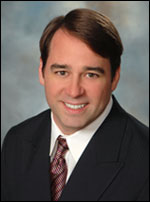
This Nose News comes out at a very exciting time for us as an organization! Two major events are taking place in the next few weeks.
We are about to embark on our third major international meeting, RhinoWorld Chicago, which follows our previous international meetings of Rhinology World 2009 in Philadelphia, and the Nose 2000 in Washington, DC. This will be a truly standout, once-in-a-decade meeting, bringing together world experts in all aspects of Rhinology. A big thanks goes out to Drs. Robert Kern, MD, FARS, Kevin Welch, MD, FARS, and so many others who have made this meeting possible. Please review the website and their overview in Nose News to whet your appetite for a great meeting. I look forward to greeting you in Chicago!
Another major change for the American Rhinologic Society (ARS) is coming – we will welcome our new Executive Vice President (EVP), Dr. Michael G. Stewart, MD, FARS as he assumes his new position during the RhinoWorld Chicago meeting. We owe a debt of gratitude to our first EVP, Dr. Joe Jacobs, who in many ways has been the “George Washington” of the ARS! His work and dedication to the organization have been simply transformational, from putting us on sound financial footing to overhauling our administration to overseeing and fostering our exponential growth in research and educational programs. When the history of the ARS is written, it will include a large chapter dedicated to Joe.
I have had a wonderful time working with all of you as your President to date, and I look forward to more exciting times!
RhinoWorld Chicago June 5-9, 2019
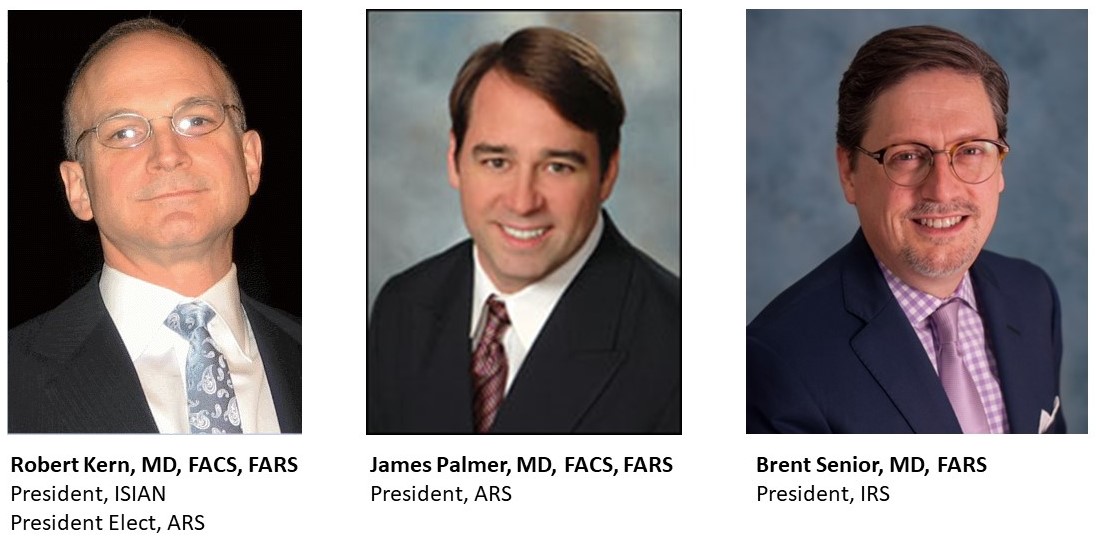
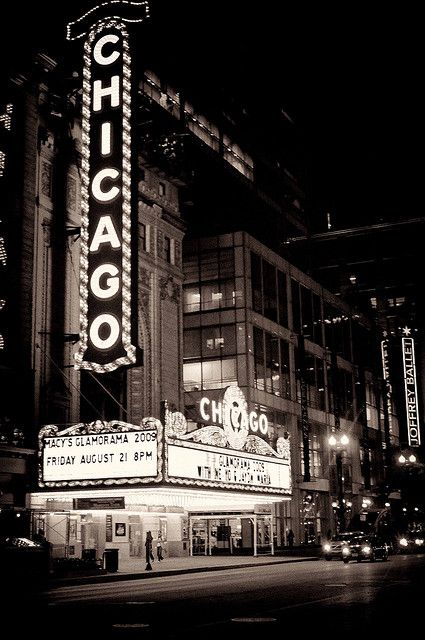 It has been 10 years since the combined meetings of the ARS and the international societies of the IRS and ISIAN have converged in the United States! Don’t miss this opportunity to attend a world class meeting in Chicago that will bring together top leaders in rhinology for dynamic debates and panel discussions. Expect cutting edge clinical insight that is relevant to your patient care decisions. The meeting will kick off on Wednesday, June 5 with the Annual ARS Summer Sinus Symposium (SSS) with the same type of clinically oriented panels featured at our annual summer events. New this year will be expanded opportunities for proctored cadaver dissection by world renowned rhinologists as well as an instruction course in allergy that will include practical sessions. It has been 10 years since the combined meetings of the ARS and the international societies of the IRS and ISIAN have converged in the United States! Don’t miss this opportunity to attend a world class meeting in Chicago that will bring together top leaders in rhinology for dynamic debates and panel discussions. Expect cutting edge clinical insight that is relevant to your patient care decisions. The meeting will kick off on Wednesday, June 5 with the Annual ARS Summer Sinus Symposium (SSS) with the same type of clinically oriented panels featured at our annual summer events. New this year will be expanded opportunities for proctored cadaver dissection by world renowned rhinologists as well as an instruction course in allergy that will include practical sessions.
On June 6th the traditional ARS Spring scientific sessions usually held at COSM are integrated into the RhinoWorld meeting with the ISIAN and IRS. RhinoWorld Chicago aims to be the premier scientific rhinology meeting in the world in the basic science and the clinical realms. Panels and symposia delivered by leading experts will cover the full range of rhinologic disease. Topics will span the latest developments in skull base surgery to the emerging role of biologic therapies. We will also have sessions devoted to acute sinusitis management using alternative, non-antibiotic based regimens. Office-based technologies will also be featured including new methods to treat chronic rhinorrhea and nasal valve collapse. We will also feature sessions on cosmetic rhinoplasty.
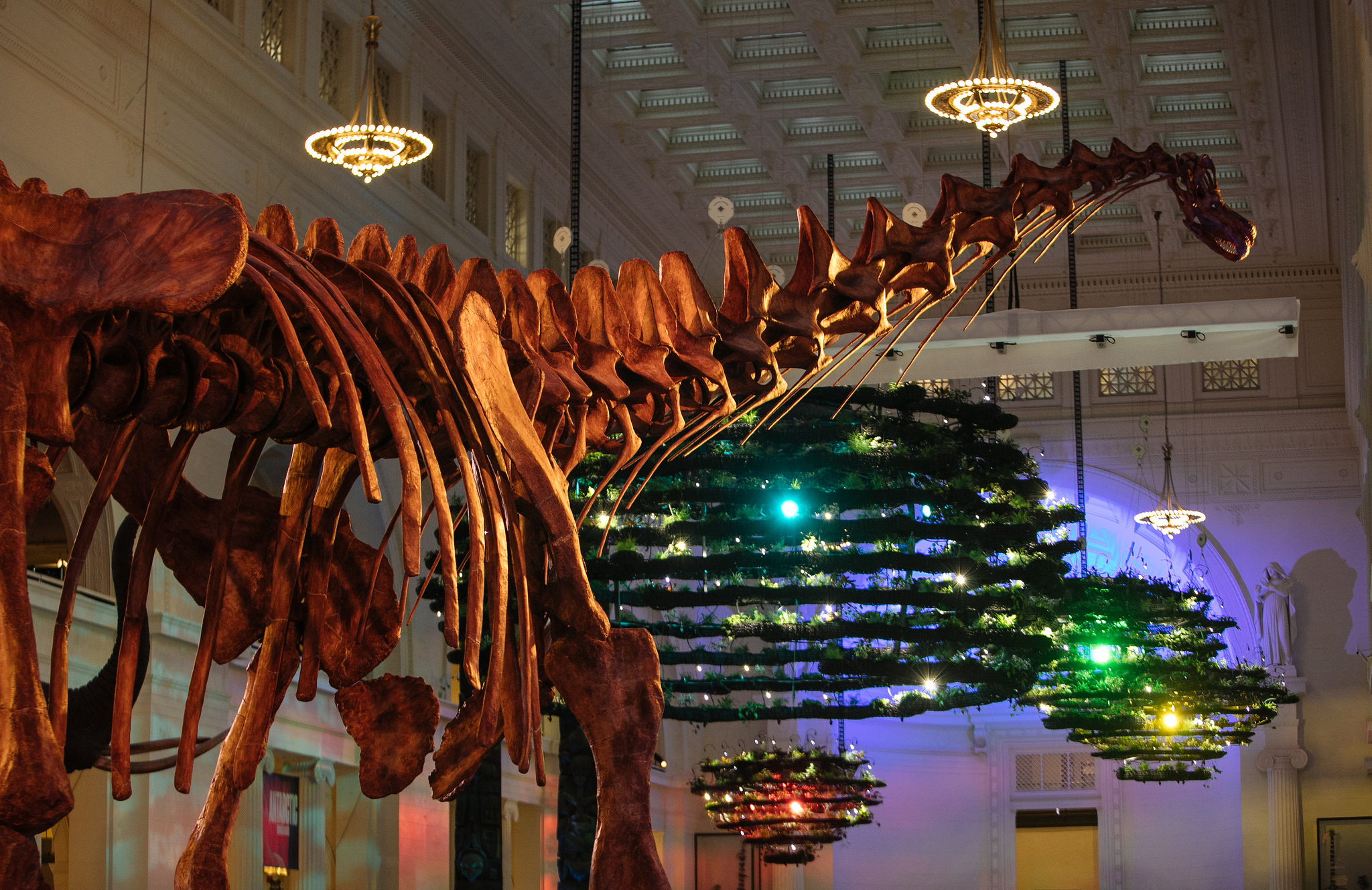 The official Opening Ceremony for RhinoWorld Chicago will be Thursday afternoon, June 6th, followed by a cocktail reception on the famed Chicago Riverwalk where we will watch the sunset over the majestic skyline. June 7th and 8th will feature a series of panels hosted by international experts on a variety of topics ranging from inflammatory disease, to skull base, to rhinoplasty. Top 10 clinical and basic science abstracts will also be presented on those days. Be sure to sign up for the Gala Dinner held on the evening of Saturday June 8thin the Field Museum, where your will enjoy the company of your colleagues and meet SUE the largest most complete T. rex specimen as well as MAXIMO the Titanosaur, the largest dinosaur that ever lived on earth! Panel discussions will continue into Sunday June 9th, which will also feature many scientific oral abstract sessions. The official Opening Ceremony for RhinoWorld Chicago will be Thursday afternoon, June 6th, followed by a cocktail reception on the famed Chicago Riverwalk where we will watch the sunset over the majestic skyline. June 7th and 8th will feature a series of panels hosted by international experts on a variety of topics ranging from inflammatory disease, to skull base, to rhinoplasty. Top 10 clinical and basic science abstracts will also be presented on those days. Be sure to sign up for the Gala Dinner held on the evening of Saturday June 8thin the Field Museum, where your will enjoy the company of your colleagues and meet SUE the largest most complete T. rex specimen as well as MAXIMO the Titanosaur, the largest dinosaur that ever lived on earth! Panel discussions will continue into Sunday June 9th, which will also feature many scientific oral abstract sessions.
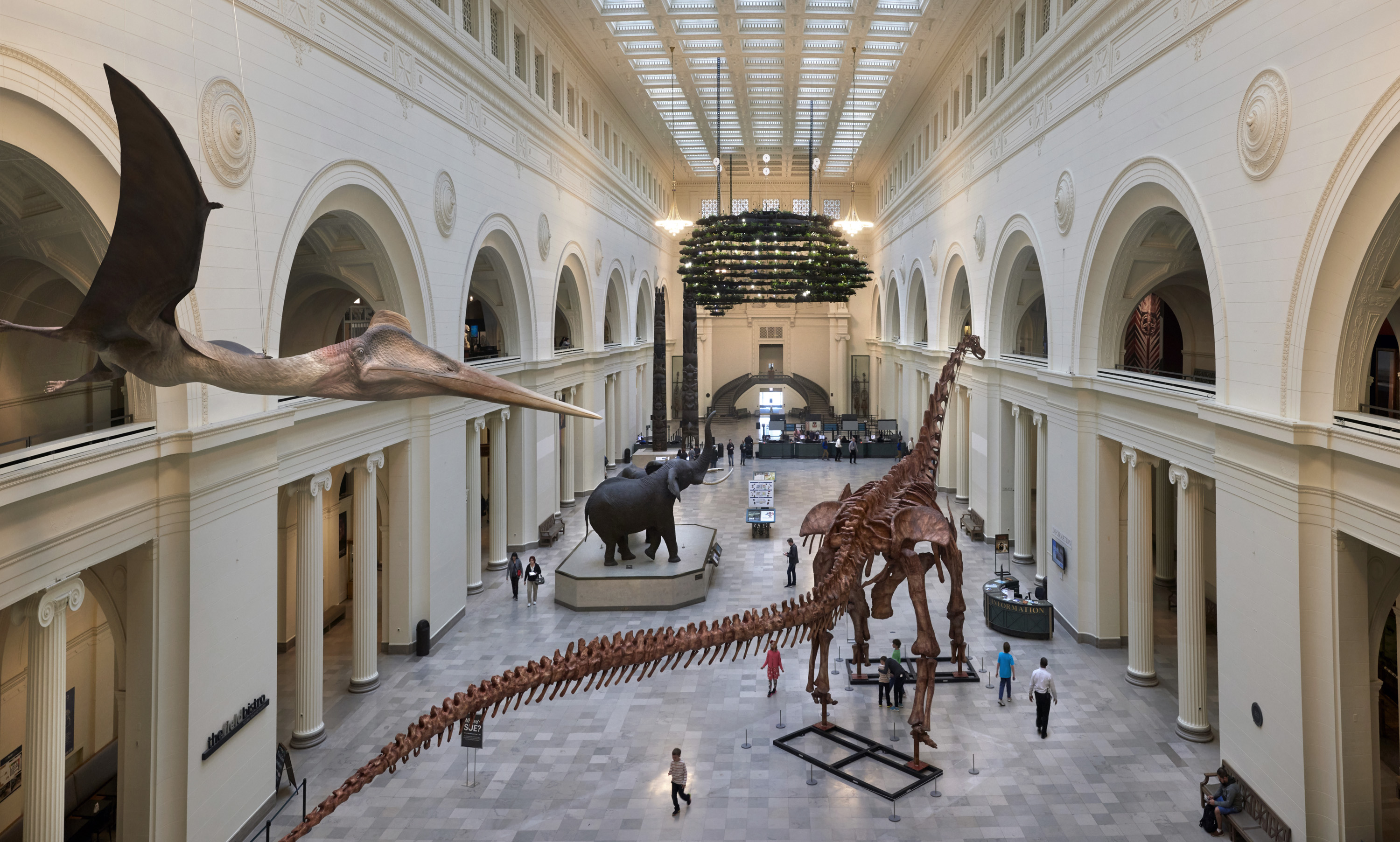 There will be multiple fantastic opportunities to enjoy summer in Chicago and to connect with colleagues from around the globe. We have great live entertainment planned for the various social events! If you play soccer (football), sign up to play at the Soldier Field on Chicago’s lakefront. RhinoWorld Chicago will be based at the beautiful Sheraton Grand Chicago Hotel on the Chicago River just steps from Michigan Avenue “Magnificent Mile” shopping, world class restaurants, and impressionistic masterpieces at the world-famous Art Institute. There will be multiple fantastic opportunities to enjoy summer in Chicago and to connect with colleagues from around the globe. We have great live entertainment planned for the various social events! If you play soccer (football), sign up to play at the Soldier Field on Chicago’s lakefront. RhinoWorld Chicago will be based at the beautiful Sheraton Grand Chicago Hotel on the Chicago River just steps from Michigan Avenue “Magnificent Mile” shopping, world class restaurants, and impressionistic masterpieces at the world-famous Art Institute.
Join us in Chicago for this world class meeting and experience!
For the full meeting agenda and registration go to: www.rhinoworld2019.com

Back to the top
THE 2019 ARS ANNUAL MEETING – New Orleans, Louisiana
Robert C. Kern, MD, FARS
President Elect and Program Chair
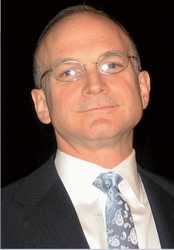 The Annual Meeting of the American Rhinologic Society (ARS) will be held September 13th and 14th, 2019, on the Friday afternoon and Saturday preceding the AAO-HNS annual meeting. The sessions will take place in the Hilton New Orleans Riverside at a beautiful time of year to visit New Orleans! The Annual Meeting of the American Rhinologic Society (ARS) will be held September 13th and 14th, 2019, on the Friday afternoon and Saturday preceding the AAO-HNS annual meeting. The sessions will take place in the Hilton New Orleans Riverside at a beautiful time of year to visit New Orleans!
Following on the heels of the RhinoWorld meeting in Chicago, the ARS annual meeting will again feature an outstanding program full of new scientific insights and practical clinical pearls. Numerous scientific papers touching all aspects of rhinology chosen from scores of submitted abstracts will be presented in both combined plenary and three breakout sessions. Over 70 podium presentations and over 100 posters will provide a rich educational experience and will undoubtedly lead to robust discussions and additional research questions. Please join me in thanking the program committee for their hard work in choosing among so many submitted abstracts and creating a high-quality program.
One of the highlights for our Fall meeting is the annual Kennedy Lecture. Now in its 15th year,
the Kennedy Lectureship has brought us the perspectives of many leaders in the field of rhinology. This year will be no different! Robert Schleimer, PhD is the Kennedy Lecturer for
2019 and will be addressing the latest translational research findings in the pathophysiology of chronic rhinosinusitis (CRS). This will pick up on many of the key RhinoWorld themes that are coming into sharp focus with the emergence of biologic agents to treat CRS. We live in an exciting and transformative time in our subspecialty and this meeting is designed to keep our membership up to date despite the rapid pace of change.
The panels for our Fall meeting will be varied and engaging. Among them will be a Joint AAOA-ARS panel, this year re-evaluating the role of antibiotics and CRS. Sessions will be dedicated to the Women in Rhinology and Residents and Fellows, designed to bring topics important to these groups to the forefront. Finally, the Rhinologic Film FESStival, an ever-popular feature of the Fall meeting, will challenge us with new advances and techniques.
There’s a large amount of material and definitely something for everyone in this year’s Fall
meeting. I look forward to seeing you in New Orleans!
Back to the top
Case of the Quarter
Catherine Banks, M.D., Qasim Husain, M.D., Vania Nose, M.D., Ph.D., Stacey Tutt Gray, M.D., F.A.R.S.
Case Description
A 58-year-old, otherwise healthy male with a known history of chronic rhinosinusitis, presented with a one-week history of left sided blurred vision and periorbital pain. In addition to the visual symptoms, he reported progressive anosmia for the prior four months. He reported a history of endoscopic sinus surgery 3 years prior to presentation for chronic rhinosinusitis (CRS) as well as a left dacryocystorhinostomy 2 years prior to presentation for epiphora and nasolacrimal duct obstruction. Physical examination findings at the time of presentation showed a mild decrease in visual acuity of the left eye, an afferent pupillary defect, and dyschromatopsia. A nasal endoscopy revealed a superior mid-septal perforation with associated crusting and inflammation of the mucosa of the middle turbinate remnants and ethmoid cavity bilaterally. (Figure 1). A computed tomography (CT) scan of the sinuses confirmed the mid-septal perforation with an enhancing soft tissue lesion centered in this region and extending to the ethmoid air cells. There was erosion of the left lamina papyracea and the cribriform plate bilaterally, with intracranial extension of soft tissue along the left cavernous sinus and the dura of the left anteromedial temporal lobe. Enhancing soft tissue was present along the anterior falx cerebri (Figure 2). The magnetic resonance imaging (MRI) further delineated the intracranial extension with leptomeningeal and pachymeningeal enhancement within the left anterior and middle cranial fossa, and the left optic nerve at the level of the orbital apex (Figure 3). An endoscopic sinonasal biopsy was performed. The histopathology and immunohistochemistry had features typical for IgG4-related disease, including lymphoplasmacytic infiltrate cells, eosinophils, storiform fibrosis, obliterative phlebitis, and IgG4/IgG plasma cell ratio greater than 40%. Serum IgG4 concentration was within normal range. Treatment with methylprednisolone 1gm daily for 3 days was commenced, followed by prednisone 60 mg daily. Rituximab was initiated prior to discharge. At the follow-up neuro-ophthalmic exam 4 days after commencement of steroids and rituximab, the patient reported that his blurry vision and periorbital pain had fully resolved. Clinically, a left relative afferent pupillary defect was present, however, improved left visual acuity, normal extraocular movement and normal trigeminal function was noted.

Figure 1. Left nasal endoscopy showing a mid-septal perforation and surrounding densely inflamed mucosa extending superiorly, and involving the middle turbinate and bilateral ethmoid sinuses.

Figure 2. An Infiltrative soft tissue extending from the superior ethmoid sinus through the left lamina papyracea (A and B - white arrow) into the left extraconal orbit along the left medial rectus muscle with additional erosion of the cribriform plate and primarily dural based intracranial extension involving the falx cerebri (C and D – white arrow) and along the left cavernous sinus and left anteromedial aspect of the middle cranial fossa (B - Black arrow).

Figure 3. MRI Coronal T1 FSE, (thin) FS. (A) There is intracranial extension with leptomeningeal and pachymeningeal enhancement within the left anterior and middle cranial fossa. (B) There is apparent enhancement within the distal canalicular segment of the left optic nerve at the level of the orbital apex. (C) MRI Axial T1 FSE, (thin) FS. Dural enhancement and thickening along the left middle cranial fossa overlies left aspect of the cavernous sinus and invasion of the left cavernous sinus cannot be excluded.
IgG4-Related Disease
IgG4-related disease (IgG4-RD) is a chronic relapsing-remitting, fibro-inflammatory systemic condition, characterized by lymphoplasmacytic infiltration with abundant IgG4 positive plasma cells, storiform fibrosis and obliterative phlebitis. An elevated serum IgG4 concentration is present in approximately two-thirds of the patients.1 IgG4-RD can affect any organ and also involve multiple organ systems. Previously unrelated systemic conditions, including Riedels’ thyroiditis, Mikulicz disease, inflammatory pseudotumor, and mediastinal fibrosis are now considered to be manifestations of IgG4-RD. Head and neck subsites are frequently affected, but it is rarely described in the sinonasal cavity, and can masquerade as a sinonasal malignancy or other systemic vasculitic or inflammatory disorders.2 The classification criteria for IgG4 is currently in a draft version and pending review.1 Therefore, at present the diagnosis is dependent on a critical correlation between clinical, radiological and pathological findings. The clinical presentation of sinonasal IgG4-RD is non-specific and the sinonasal symptoms can include nasal obstruction, nasal crusting, nasal pain, nasal discharge, headaches, epistaxis and hyposmia.3-5
The radiological features on CT scan and MRI can include a homogeneous soft tissue lesion with well-defined lesion borders, with or without bone destruction on CT scan. On MRI, the lesions are classically hypointense relative to gray matter on T2-weighted imaging due to the combination of fibrosis and cellularity. There is typically absent vascular occlusion and or compression.4,6,7 The histopathology is the single best test for the diagnosis of IgG4-RD (Figure 4). The diagnosis requires at least 2 of the 3 histologic criteria of dense lymphoplastic infiltrate, storiform fibrosis, and obliterative phlebitis. The storiform fibrosis is used to describe radiating fibroblasts and inflammatory cells, resembling the spokes of a cartwheel. The immunohistochemistry of elevated numbers of IgG4 positive cells and an IgG4 to IgG ratio of greater than 40% is also required for diagnosis.8
Recently, eosinophilic angiocentric fibrosis, a rare tumefactive lesion, present in the sinonasal cavity, orbit, and upper and lower respiratory airway has been included in the IgG4–RD spectrum of diseases. Although the etiology of eosinophilic angiocentric fibrosis remaims unknown, plasma cells seen early in the inflammatory infiltrate of eosinophilic angiocentric fibrosis have been shown to be IgG4 positive prompting speculation that it is a member of the IgG4-RD.9
Glucocorticoids remain the first line treatment for IgG4-RD. However, relapses are frequent during tapering, so glucocorticoid-sparing immunosuppressive agents are usually considered. Options include Methotrexate, Azathioprine, Mycophenolate, 6-Mercaptopurine and Cyclophosphamide. More recently, Rituximab has been used to induce remission with good initial results, however controlled studies comparing efficacy are lacking.10

Figure 4. (A) Photomicrograph of IgG4-RD showing plasma cell infiltration and fibrosis. Storiform fibrosis and obliterative phelebitis can be seen; 40x (Hematoxylin-eosin stain). (B) Immunostain for IgG4 highlights increase number of IgG4 plasma cells; 100x (Brown stained cells).
Summary
IgG4-RD presents a diagnostic challenge for the otolaryngologist. A high index of clinical suspicion in patients with destructive lesions of the sinonasal cavity is essential to avoid delay in diagnosis or unnecessary invasive intervention. Glucocorticoids and glucocorticoid-sparing immunosuppressive agents are the first line treatment.
REFERENCES
1. Bozzalla Cassione E, Stone JH. IgG4-related disease. Curr Opin Rheumatol. 2017;29(3):223-227.
2. Stone JH, Brito-Zeron P, Bosch X, Ramos-Casals M. Diagnostic Approach to the Complexity of IgG4-Related Disease. Mayo Clin Proc. 2015;90(7):927-939.
3. Ohno K, Matsuda Y, Arai T, Kimura Y. Nasal manifestations of IgG4-related disease: A report of two cases. Auris Nasus Larynx. 2015;42(6):483-487.
4. Song BH, Baiyee D, Liang J. A rare and emerging entity: Sinonasal IgG4-related sclerosing disease. Allergy Rhinol (Providence). 2015;6(3):151-157.
5. Chen BN. IgG4-related disease presenting with destructive sinonasal lesion mimicking malignancy. Eur Arch Otorhinolaryngol. 2016;273(11):4027-4029.
6. Katsura M, Mori H, Kunimatsu A, et al. Radiological features of IgG4-related disease in the head, neck, and brain. Neuroradiology. 2012;54(8):873-882.
7. Rice CM, Spencer T, Bunea G, Scolding NJ, Sloan P, Nath U. Intracranial spread of IgG4-related disease via skull base foramina. Pract Neurol. 2016;16(3):240-242.
8. Arora K, Rivera M, Ting DT, Deshpande V. The histological diagnosis of IgG4-related disease on small biopsies: challenges and pitfalls. Histopathology. 2019;74(5):688-698.
9. Ahn J, Flanagan M. Eosinophilic Angiocentric Fibrosis: A Review and Update of Its Association With Immunoglobulin G4-Related Disease. Arch Pathol Lab Med. 2018;142(12):1560-1563.
10. Stone JH. IgG4-related disease: pathophysiologic insights drive emerging treatment approaches. Clin Exp Rheumatol. 2016;34(4 Suppl 98):66-68.
Back to the top
Women in Rhinology Section
Jivianne T. Lee, MD, FARS
Chair - Women in Rhinology
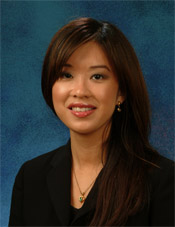 It has been a busy inaugural year for the Women in Rhinology (WiR) Section of the American Rhinologic Society (ARS). Upcoming events at Rhinoworld include a cocktail reception honoring Valerie Lund, MD that will be cosponsored by the WiR on Thursday June 6th at 5pm, and an interactive lecture entitled “Fearless Leadership – 9 Hacks to Playing Big” sponsored by the WiR on Sunday June 9th from 7-9am. At the ARS Fall Meeting in New Orleans, the WiR, Mentorship Committee, and Residents & Fellows Committee will be hosting a lunchtime lecture on Sunday September 15th at 12pm. Our speaker is Maisie Shindo, MD who is a Professor of Otolaryngology - Head and Neck Surgery and Director of the Thyroid and Parathyroid program at Oregon Health and Science University. Her topic will be “Coaching Resiliency in Residents and Preventing Physician Burnout.” Please join us for these exciting events. All are welcome. It has been a busy inaugural year for the Women in Rhinology (WiR) Section of the American Rhinologic Society (ARS). Upcoming events at Rhinoworld include a cocktail reception honoring Valerie Lund, MD that will be cosponsored by the WiR on Thursday June 6th at 5pm, and an interactive lecture entitled “Fearless Leadership – 9 Hacks to Playing Big” sponsored by the WiR on Sunday June 9th from 7-9am. At the ARS Fall Meeting in New Orleans, the WiR, Mentorship Committee, and Residents & Fellows Committee will be hosting a lunchtime lecture on Sunday September 15th at 12pm. Our speaker is Maisie Shindo, MD who is a Professor of Otolaryngology - Head and Neck Surgery and Director of the Thyroid and Parathyroid program at Oregon Health and Science University. Her topic will be “Coaching Resiliency in Residents and Preventing Physician Burnout.” Please join us for these exciting events. All are welcome.
On the research front, the WiR has created a database as a way of promoting idea-sharing and research collaboration among its members. If you are interested in contributing, please contact Patricia Loftus or Stephanie Smith, MD, FARS.
Lastly, we would like to welcome Karen Bednarsky, MD as our newly-elected Mentorship Chair and look forward to her contributions to our section. If you have questions or want to get more involved with the WiR, please contact any of the officers listed below:
Jivianne T. Lee, MD, FARS - Chair: [email protected]
Elina Toskala, MD, FARS – Chair Elect: [email protected]
Patricia Loftus, MD, FARS – Information Officer: [email protected]
Stephanie Joe, MD, FARS – Financial Officer: [email protected]
Stephanie Shintani Smith, MD – Research Chair: [email protected]
Danielle Warner, MD – Member at Large: [email protected]
Lauren Luk, MD – Member at Large: [email protected]g
Back to the top
Membership Committee Update
Erin K. O’Brien, MD, FARS
Chair, ARS Membership Committee
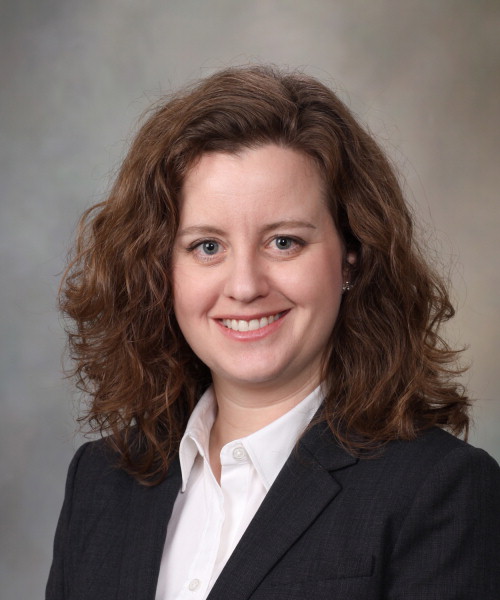 We are happy to report that we continue to have a very strong membership base with over a thousand active members. Our committee reviews new applications every month, checking that applicants meet the requirements for active membership. With the transition to Memberclicks as our membership management software, we are able to provide easier renewal notification and payment options for members as well as provide better up-to-date information on our membership numbers for the American Rhinologic Society (ARS) board and committees. We have recently added a membership category for European Rhinologic Society (ERS) members to join the ARS with the option of receiving the International Forum of Allergy and Rhinology (IFAR) journal. Currently twenty-nine ERS members have joined the ARS with this new membership option. Affiliate members also receive online access to IFAR. We hope that you will encourage your NP/PA colleagues as well as physician colleagues in Allergy/Immunology to consider applying for affiliate membership to allow them to have access to our online materials and the journal and discount registration for meetings. We are happy to report that we continue to have a very strong membership base with over a thousand active members. Our committee reviews new applications every month, checking that applicants meet the requirements for active membership. With the transition to Memberclicks as our membership management software, we are able to provide easier renewal notification and payment options for members as well as provide better up-to-date information on our membership numbers for the American Rhinologic Society (ARS) board and committees. We have recently added a membership category for European Rhinologic Society (ERS) members to join the ARS with the option of receiving the International Forum of Allergy and Rhinology (IFAR) journal. Currently twenty-nine ERS members have joined the ARS with this new membership option. Affiliate members also receive online access to IFAR. We hope that you will encourage your NP/PA colleagues as well as physician colleagues in Allergy/Immunology to consider applying for affiliate membership to allow them to have access to our online materials and the journal and discount registration for meetings.
Since Dr. Stacey Gray's membership committee update for the Nose News two years ago, we have increased the number of active Fellow of the American Rhinologic Society (FARS) members to 243 paid FARS members. FARS membership demonstrates a commitment to the field of surgical rhinology and in providing service to the medical community through education for patients and colleagues. Members with FARS status are eligible to run for ARS office including committee chair positions. FARS applicants do not need to have completed additional fellowship training to be eligible for Fellow status; the requirements include 50 surgical rhinologic cases in a two-year period, at least 3 years out from residency training, documentation of service to the rhinologic community, attendance of at least 3 ARS meetings or ARS-sponsored courses over a 3-year period and sponsorship by two current FARS members in good standing. Our committee reviews FARS applications monthly. Please contact us at [email protected] if you are interested in more information about applying for FARS status.
We look forward to further demonstrating the benefits of membership in the ARS at RhinoWorld in Chicago this June and at the fall meeting in New Orleans in September, and through educational opportunities throughout the year.
Back to the top
A MESSAGE FROM THE IFAR EDITOR-IN-CHIEF ELECT
Timothy L. Smith, MD MPH FACS
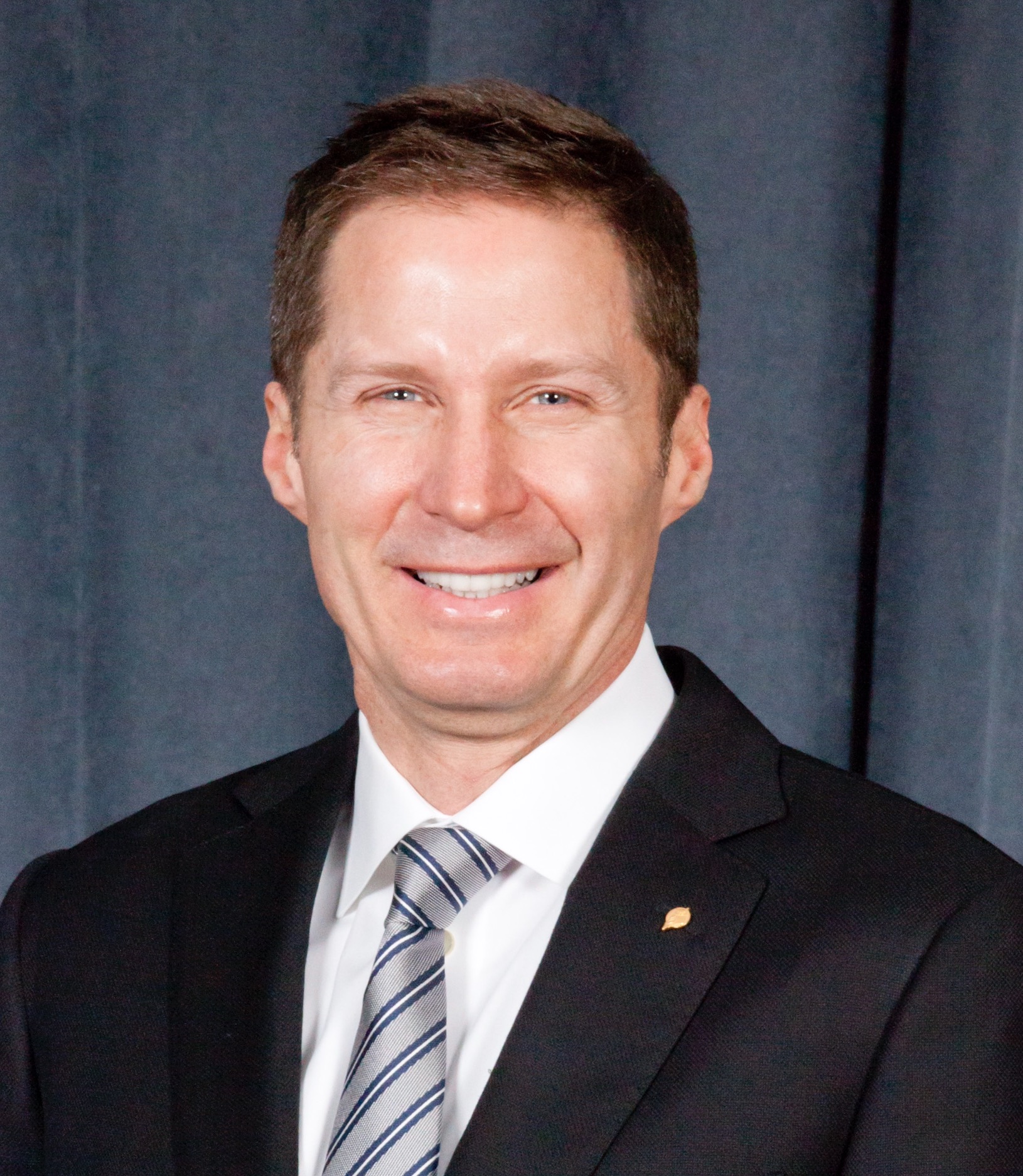 When you publish in the International Forum of Allergy and Rhinology (IFAR), your work reaches an international audience that continues to grow exponentially. When you publish in the International Forum of Allergy and Rhinology (IFAR), your work reaches an international audience that continues to grow exponentially.
Our goal: IFAR will be the highest impact journal in the field and no other journal in the world will achieve the number of downloads in the realm of rhinology, endoscopic cranial base, and otolaryngic allergy as IFAR.
Our message: Submit your best work to IFAR and we will work harder than any other journal to disseminate your work around the globe.
I hope you enjoy these IFAR highlights!
Most Cited
International Consensus Statement on Allergy and Rhinology: Allergic Rhinitis
February 2018
Corticosteroid nasal irrigations are more effective than simple sprays in a randomized double‐blinded placebo‐controlled trial for chronic rhinosinusitis after sinus surgery
April 2018
A phase 3 trial of mometasone furoate sinus implants for chronic sinusitis with recurrent nasal polyps
April 2018
Investigation of the abnormal nasal aerodynamics and trigeminal functions among empty nose syndrome patients
March 2018
Solitary chemosensory cells producing interleukin‐25 and group‐2 innate lymphoid cells are enriched in chronic rhinosinusitis with nasal polyps
August 2018
Most Accessed
International Consensus Statement on Allergy and Rhinology: Allergic Rhinitis
February 2018
A phase 3 trial of mometasone furoate sinus implants for chronic sinusitis with recurrent nasal polyps
April 2018
International consensus statement on allergy and rhinology: allergic rhinitis—executive summary
February 2018
Clinical associations between allergies and rapid eye movement sleep disturbances
July 2018
Highlights of eosinophilic chronic rhinosinusitis with nasal polyps in definition, prognosis, and advancement
November 2018
Most Shared
Induction of smell through transethmoid electrical stimulation of the olfactory bulb
Altmetric Score: 108 ● February 2019
Etiology of subjective taste loss
Altmetric Score: 68 ● April 2019
Alcohol-induced respiratory symptoms improve after aspirin desensitization in patients with aspirin-exacerbated respiratory disease
Altmetric Score: 31 ● Published: October 2018
Intranasal endoscopic identification of the nasal septal L‐strut: a cadaveric study
Altmetric Score: 15 ● EarlyView
Deadly amoeba infections from nasal and sinus irrigation: how should we discuss with our patients?
Altmetric Score: 14 ● Published: April 2019
Back to the top
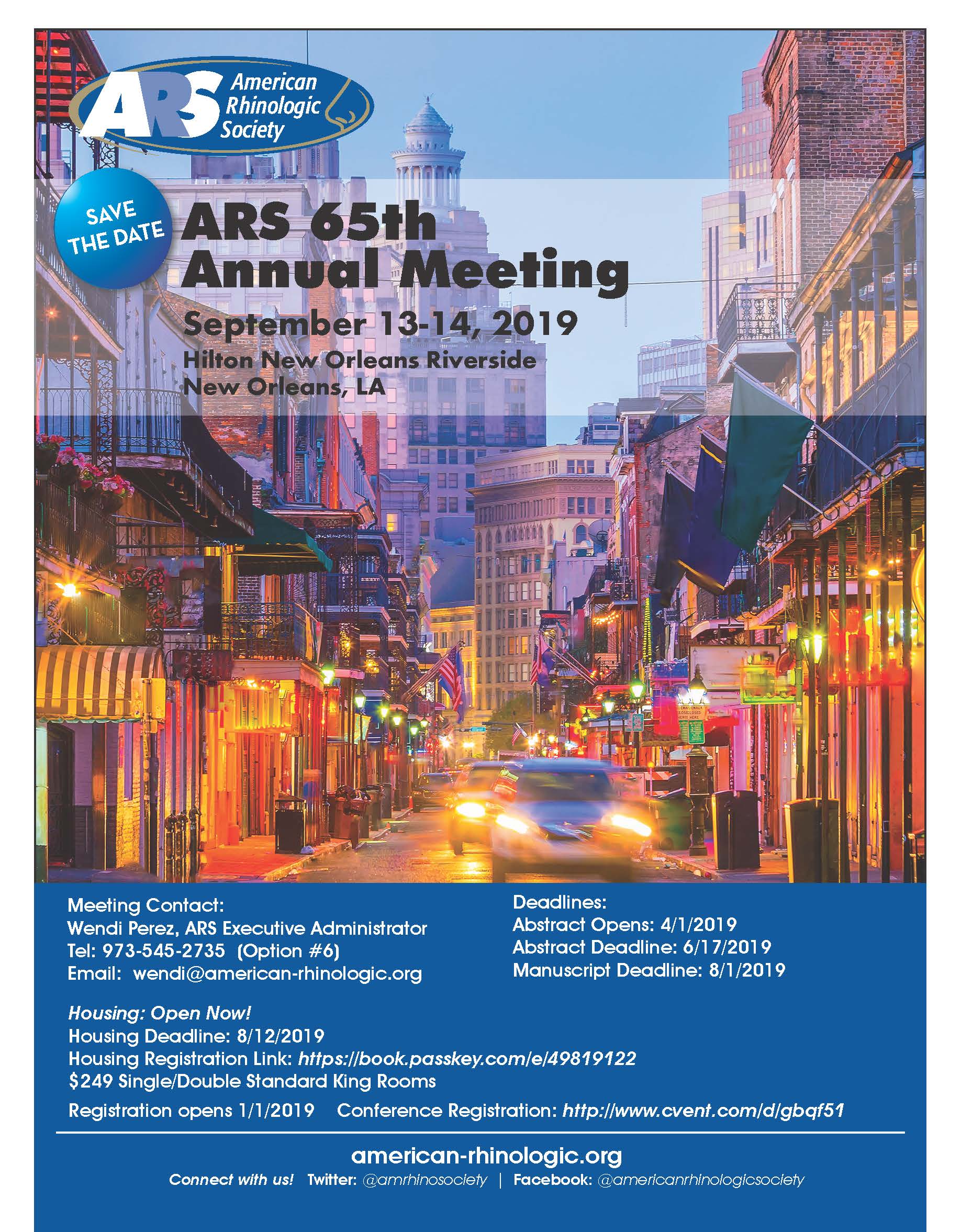
Back to the top
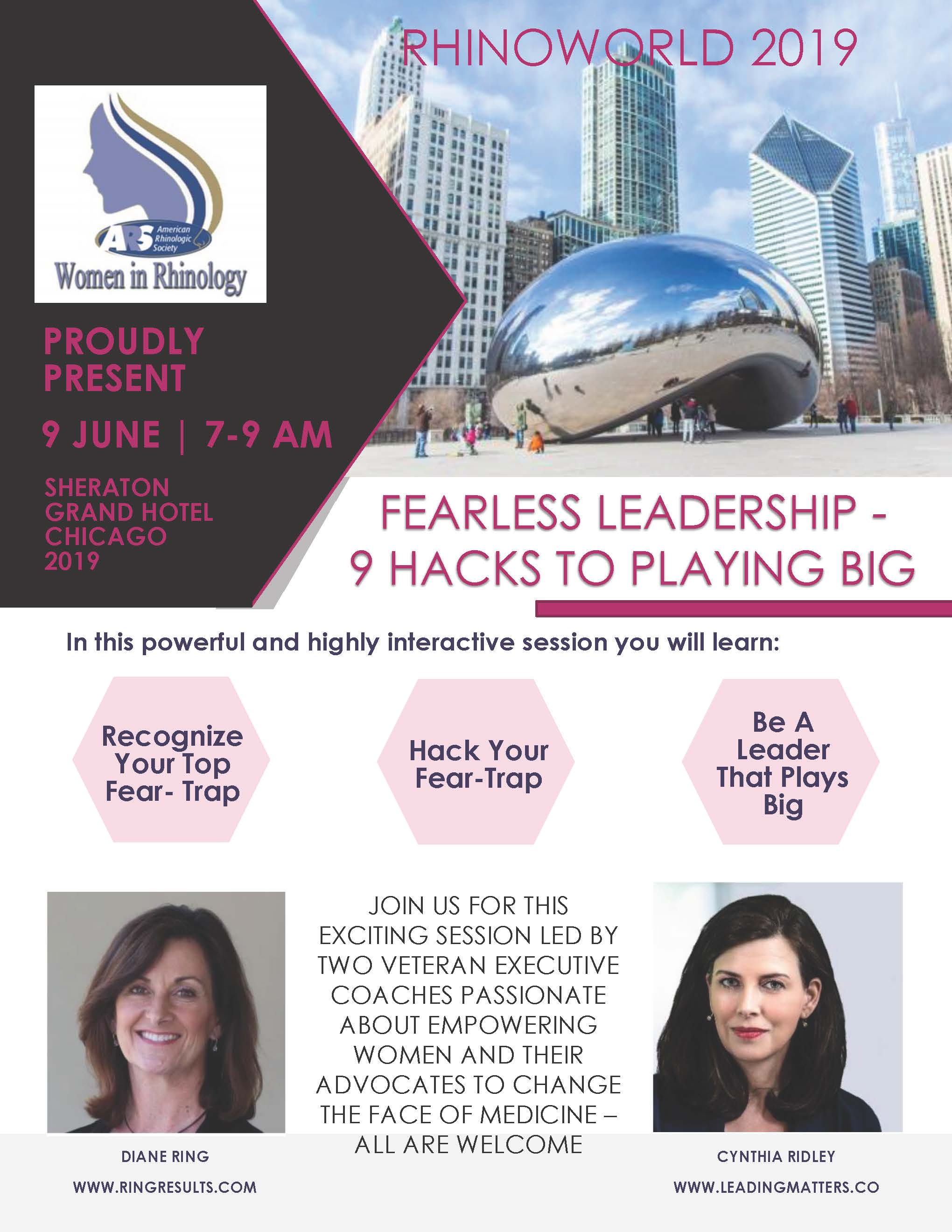
Back to the top
Friends in Research Campaign
The 2019 Campaign is off to a great start and we thank the many members who have already contributed (see below). If you have not already donated, please consider making a donation today. With your support, we can continue to fund the studies that provide clinical insights valuable to the care of our patients. In the past, these efforts have helped to establish the ARS and its members as the leaders in rhinologic research. This work not only advances the care of our patients through scientific innovation, but also generates important data establishing the efficacy and cost effectiveness of our care. In the current financial landscape, this is equally important to ensure that our patients have access to the treatment necessary to address their complaints.
We thank you again for your help in this worthy endeavor!
Click to donate now and join us in our 2019 year campaign!
DIAMOND
Thomas Davis, MD
Lee Mandel, MD, FARS
PLATINUM
Benjamin Bleier, MD, FARS
Roy Casiano, MD, FARS
Charles Ebert, Jr., MD, FARS
Jean Anderson Eloy, MD, FARS
James Hadley, MD, FARS
Peter Hwang, MD, FARS
Robert Kern, MD, FARS
R. Peter Manes, MD, FARS
Richard Orlandi, MD, FARS
James Palmer, MD, FARS
Spencer Payne, MD, FARS
Doug Reh, MD, FARS
Marc Rosen, MD, FARS
Rodney Schlosser, MD, FARS
Michael Stewart, MD, FARS
Marilene Wang, MD, FARS
GOLD
Naveen Bhandarkar, MD, FARS
Greg Davis, MD, FARS
SILVER
Do-Yeon Cho, MD
David Gudis, MD, FARS
John Houck, MD
Kent Lam, MD
Ryan Little, MD
Elina Toskala, MD, FARS
BRONZE
Sanford Archer, MD, FARS
AHM Delwar, MBBS
Rohit Garg, MD, FARS
Wayne Hsueh, MD
Jonathan Overdevest, MD, PhD
Corinna Levine, MD
Austin Rose, MD, FARS
Kristine Smith, MD
Jessica Southwood, MD
FRIEND
Abdullah Alsharif, MBBS
Gretchen Oakley, MD
*as of 5/22/19
Back to the top
|






 It has been 10 years since the combined meetings of the ARS and the international societies of the IRS and ISIAN have converged in the United States! Don’t miss this opportunity to attend a world class meeting in Chicago that will bring together top leaders in rhinology for dynamic debates and panel discussions. Expect cutting edge clinical insight that is relevant to your patient care decisions. The meeting will kick off on Wednesday, June 5 with the Annual ARS Summer Sinus Symposium (SSS) with the same type of clinically oriented panels featured at our annual summer events. New this year will be expanded opportunities for proctored cadaver dissection by world renowned rhinologists as well as an instruction course in allergy that will include practical sessions.
It has been 10 years since the combined meetings of the ARS and the international societies of the IRS and ISIAN have converged in the United States! Don’t miss this opportunity to attend a world class meeting in Chicago that will bring together top leaders in rhinology for dynamic debates and panel discussions. Expect cutting edge clinical insight that is relevant to your patient care decisions. The meeting will kick off on Wednesday, June 5 with the Annual ARS Summer Sinus Symposium (SSS) with the same type of clinically oriented panels featured at our annual summer events. New this year will be expanded opportunities for proctored cadaver dissection by world renowned rhinologists as well as an instruction course in allergy that will include practical sessions. The official Opening Ceremony for RhinoWorld Chicago will be Thursday afternoon, June 6th, followed by a cocktail reception on the famed Chicago Riverwalk where we will watch the sunset over the majestic skyline. June 7th and 8th will feature a series of panels hosted by international experts on a variety of topics ranging from inflammatory disease, to skull base, to rhinoplasty. Top 10 clinical and basic science abstracts will also be presented on those days. Be sure to sign up for the Gala Dinner held on the evening of Saturday June 8thin the Field Museum, where your will enjoy the company of your colleagues and meet SUE the largest most complete T. rex specimen as well as MAXIMO the Titanosaur, the largest dinosaur that ever lived on earth! Panel discussions will continue into Sunday June 9th, which will also feature many scientific oral abstract sessions.
The official Opening Ceremony for RhinoWorld Chicago will be Thursday afternoon, June 6th, followed by a cocktail reception on the famed Chicago Riverwalk where we will watch the sunset over the majestic skyline. June 7th and 8th will feature a series of panels hosted by international experts on a variety of topics ranging from inflammatory disease, to skull base, to rhinoplasty. Top 10 clinical and basic science abstracts will also be presented on those days. Be sure to sign up for the Gala Dinner held on the evening of Saturday June 8thin the Field Museum, where your will enjoy the company of your colleagues and meet SUE the largest most complete T. rex specimen as well as MAXIMO the Titanosaur, the largest dinosaur that ever lived on earth! Panel discussions will continue into Sunday June 9th, which will also feature many scientific oral abstract sessions. There will be multiple fantastic opportunities to enjoy summer in Chicago and to connect with colleagues from around the globe. We have great live entertainment planned for the various social events! If you play soccer (football), sign up to play at the Soldier Field on Chicago’s lakefront. RhinoWorld Chicago will be based at the beautiful Sheraton Grand Chicago Hotel on the Chicago River just steps from Michigan Avenue “Magnificent Mile” shopping, world class restaurants, and impressionistic masterpieces at the world-famous Art Institute.
There will be multiple fantastic opportunities to enjoy summer in Chicago and to connect with colleagues from around the globe. We have great live entertainment planned for the various social events! If you play soccer (football), sign up to play at the Soldier Field on Chicago’s lakefront. RhinoWorld Chicago will be based at the beautiful Sheraton Grand Chicago Hotel on the Chicago River just steps from Michigan Avenue “Magnificent Mile” shopping, world class restaurants, and impressionistic masterpieces at the world-famous Art Institute. 
 The Annual Meeting of the American Rhinologic Society (ARS) will be held September 13th and 14th, 2019, on the Friday afternoon and Saturday preceding the AAO-HNS annual meeting. The sessions will take place in the Hilton New Orleans Riverside at a beautiful time of year to visit New Orleans!
The Annual Meeting of the American Rhinologic Society (ARS) will be held September 13th and 14th, 2019, on the Friday afternoon and Saturday preceding the AAO-HNS annual meeting. The sessions will take place in the Hilton New Orleans Riverside at a beautiful time of year to visit New Orleans!



 It has been a busy inaugural year for the
It has been a busy inaugural year for the  We are happy to report that we continue to have a very strong membership base with over a thousand active members. Our committee reviews new applications every month, checking that applicants meet the requirements for active membership. With the transition to Memberclicks as our membership management software, we are able to provide easier renewal notification and payment options for members as well as provide better up-to-date information on our membership numbers for the American Rhinologic Society (ARS) board and committees. We have recently added a membership category for European Rhinologic Society (ERS) members to join the ARS with the option of receiving the International Forum of Allergy and Rhinology (IFAR) journal. Currently twenty-nine ERS members have joined the ARS with this new membership option. Affiliate members also receive online access to IFAR. We hope that you will encourage your NP/PA colleagues as well as physician colleagues in Allergy/Immunology to consider applying for affiliate membership to allow them to have access to our online materials and the journal and discount registration for meetings.
We are happy to report that we continue to have a very strong membership base with over a thousand active members. Our committee reviews new applications every month, checking that applicants meet the requirements for active membership. With the transition to Memberclicks as our membership management software, we are able to provide easier renewal notification and payment options for members as well as provide better up-to-date information on our membership numbers for the American Rhinologic Society (ARS) board and committees. We have recently added a membership category for European Rhinologic Society (ERS) members to join the ARS with the option of receiving the International Forum of Allergy and Rhinology (IFAR) journal. Currently twenty-nine ERS members have joined the ARS with this new membership option. Affiliate members also receive online access to IFAR. We hope that you will encourage your NP/PA colleagues as well as physician colleagues in Allergy/Immunology to consider applying for affiliate membership to allow them to have access to our online materials and the journal and discount registration for meetings. When you publish in the International Forum of Allergy and Rhinology (IFAR), your work reaches an international audience that continues to grow exponentially.
When you publish in the International Forum of Allergy and Rhinology (IFAR), your work reaches an international audience that continues to grow exponentially.